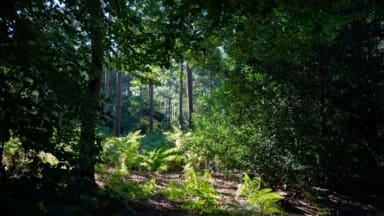
Biodiversity net gain (BNG), the new force behind the natural capital market, means that all new building projects must achieve a minimum of 10% net gain in biodiversity or habitat – either on or off site. In other words, land affected by new developments must be compensated for under the new rules, which should in theory benefit biodiversity, habitats and secure valuable green space.
The introduction of BNG will see the biggest change to planning regulations in decades. From now on, developers will be expected to prioritise on-site solutions to achieve BNG, such as creating new habitats or enhancing existing ones within the development site. However, if that is not a possibility, they can create off-site solutions or buy biodiversity units from a habitat bank provider to achieve their net gain target. As a last resort, if no other options are available, they can purchase statutory credits from the government.
Despite interest, to date the biodiversity market is still experiencing low demand. Natural capital asset classes are still overlooked by mainstream investors due to the lack of large-scale investment opportunities (due to asset and industry fragmentation) and a lack of sufficient sector knowledge and experience within investors’ portfolio teams.
According to BloombergNEF, as of May 2023, $8 million has been committed for biodiversity credits worldwide. Although the voluntary market is still nascent, biodiversity credits have the potential to generate between $18 to $43 Billion in annual revenue by 2050, according to research by Inevitable Policy Response. BloombergNEF is more optimistic, expecting the market to reach over $160 billion by 2030 (taking into account demand for both voluntary credits and offsets).
BNG becoming a mandatory market, will help to draw in more investment and market activity – as will the growing demand for biodiversity credits around the world. Just as in the UK, biodiversity credit markets are being developed in countries such as Australia where the Nature Repair Act came into effect in December 2023, and there are on going discussions taking place in France, Sweden, Singapore and Columbia on how biodiversity credits may work in their jurisdictions.
Corporates and industrial actors are expected to be key market buyers. Consumer awareness and demand for sustainability are helping to drive change with industries and mainstream investors increasingly keen to foster a nature-positive economy, creating opportunities for the biodiversity credits market. Expectations indicate that the government too will generate demand for biodiversity credits as a means to achieve policy goals – for example leveraging biodiversity credits to replace subsidies or to implement nature enhancing policies. There are also opinions that government involvement should go further, defining biodiversity as a public good and hence require government funding or be incorporated into private investment through public policy, regulations and incentives.
Respective BNG credits are broken down into low, medium and high distinctiveness categories, with different habitats further broken down within each category, the costs for which increase with the habitat’s higher distinctiveness. The latest prices can be found on Defra’s statutory biodiversity credits prices webpage. Prices (subject to VAT) are based on the cost to create, maintain and monitor different habitat types. There is also a mark-up to prevent statutory credit prices undercutting the off-site market.
With BNG becoming mandatory, Jamie Evans-Freke, Partner and Department Head at Knight Frank is expecting an initial surge of demand from developers who already have schemes in the pipeline. “For future projects I expect a lot of BNG to be built into schemes on-site and factored into land values”, said Evans-Freke. He warned for an initial surge in supply of BNG sites as that could push down the price of each unit. That said, land is a finite asset, with supply increasingly constrained by ongoing urban development and/or degradation, meaning that investors will be chasing a listed set of scale and grade assets, so there may be significant value for early movers.
Just as other markets, natural capital markets are subject to global challenges in terms of economic cycles and ongoing conflict, impacting activity in 2024. With the market still in its infancy, investors are still in the early stages of considering investing in nature conservation, but as economies and industries adapt to the growing need to combat the ecological crisis, there is a clear opportunity to bridge policy, consumer demand and investor commitments on the biodiversity credits market.
Further reading:
- Natural England: Get ready for new Biodiversity Net Gain legislation
- thedirt.news: The Statutory Biodiversity Metric
- thedirt.news: Councils should aim to go beyond 10% BNG
- thedirt.news: Will Biodiversity Net Gain benefit the landscape community?

